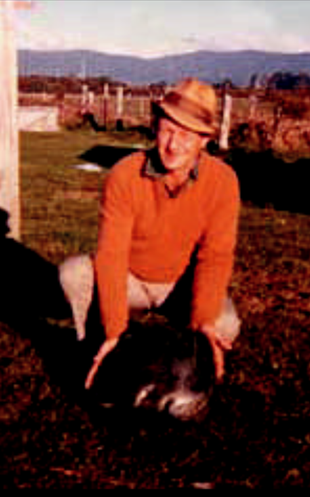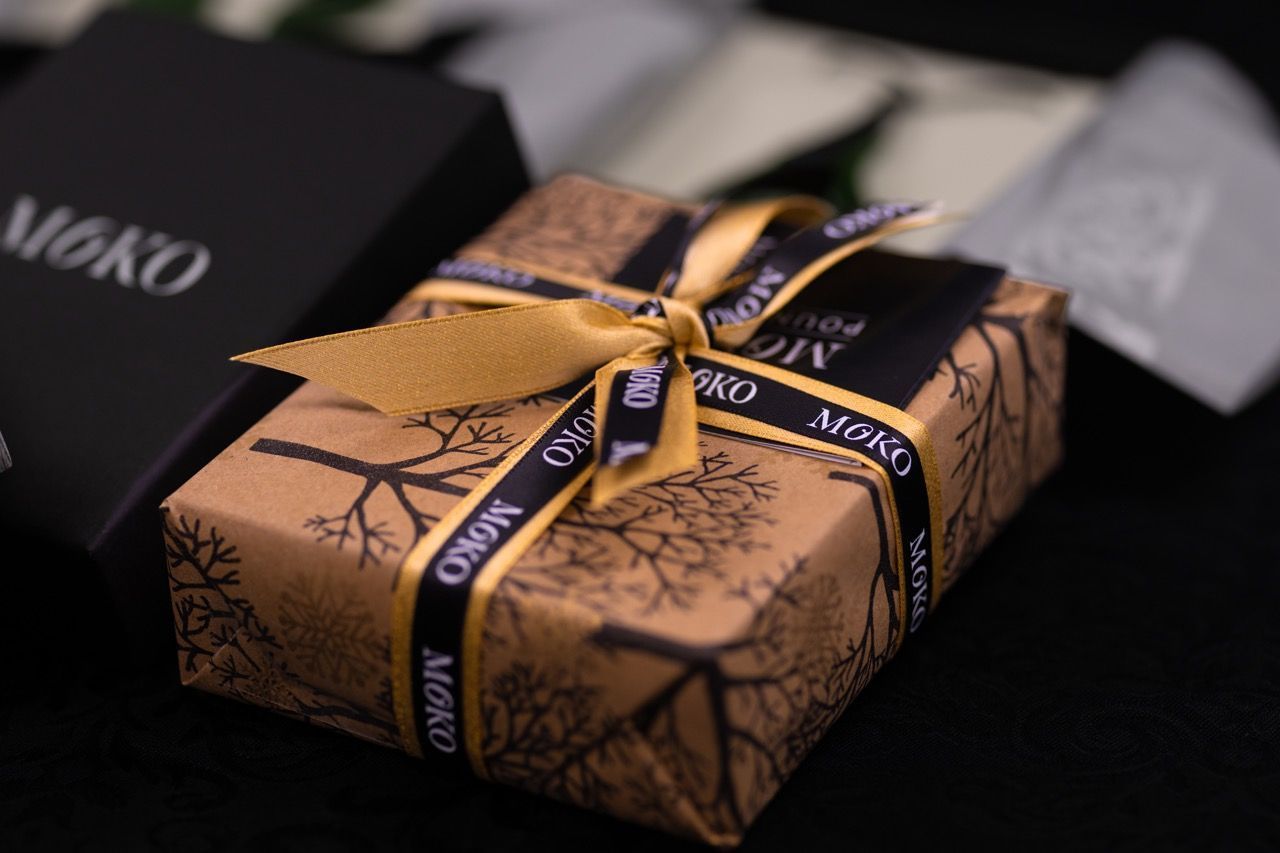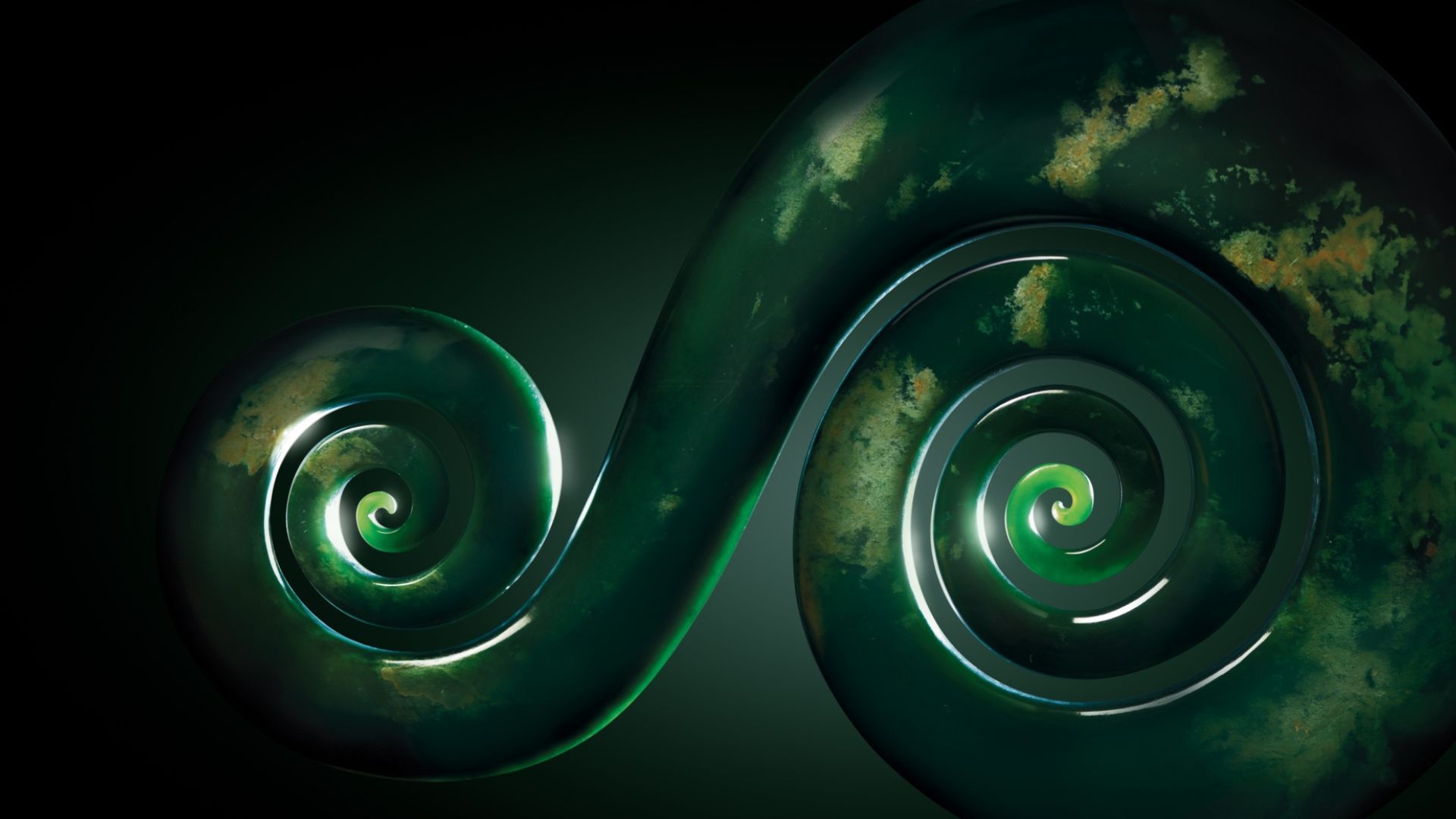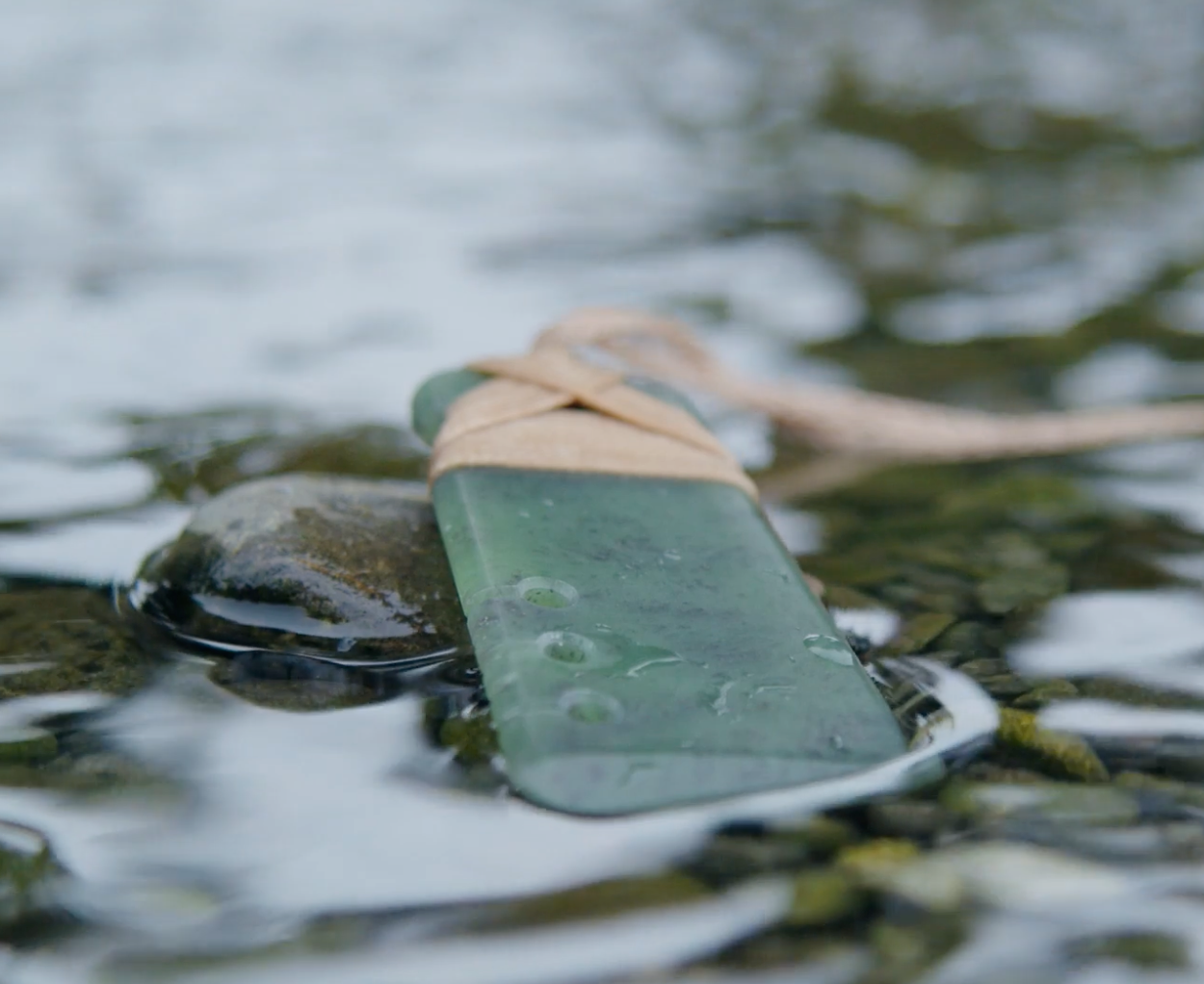
The what, why and how of Pounamu Greenstone.
WHAT IS GREENSTONE AND HOW DID IT GET ITS NAME?
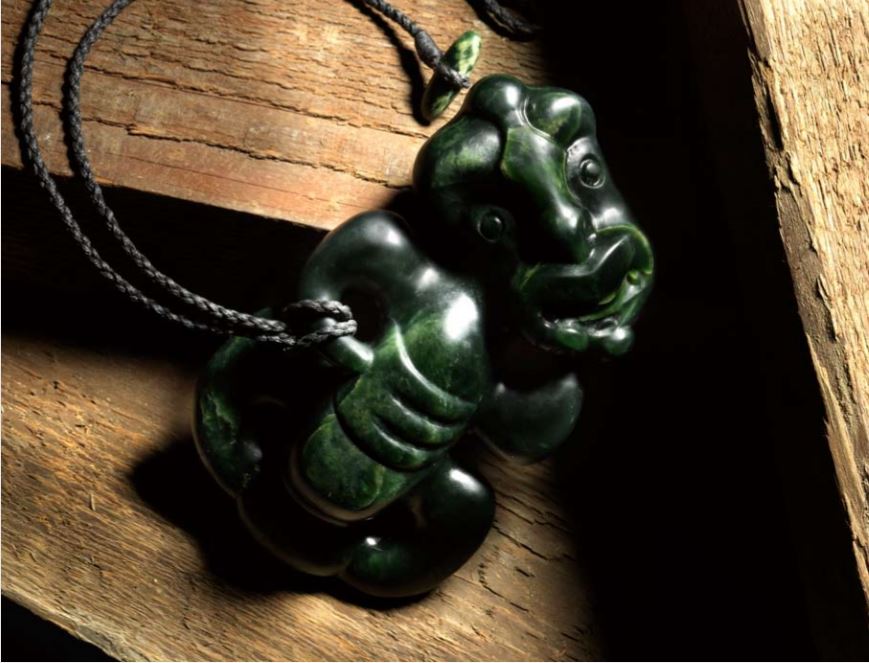
‘Pounamu’ is the Maori name for Greenstone. It is the God stone of our Maori people, along with Serpentine and other closely related stones of the Amphibole group of minerals.
It is hugely significant for Maori, for it was often used as a seal for transfers of title, the Greenstone ‘taonga’ or treasure taking the place of a document as proof and sale of land.
When Captain Cook first discovered New Zealand in 1769 he noticed the Maori working a green coloured stone. It’s thought that this is where the name ‘Greenstone’ originated from.
In fact the name ‘Greenstone’ is a slang term. Its correct mineral name is “Nephrite” (pronounced nef ’-rite). It is an extremely tough stone made up of interwoven fibres that will actually bend before breaking. Even then the parts have to be pulled apart.
Nephrite is found in many parts of the world but New Zealand Greenstone is unique because of the vast range of colour variations between the main varieties.
The Creation of New Zealand Greenstone
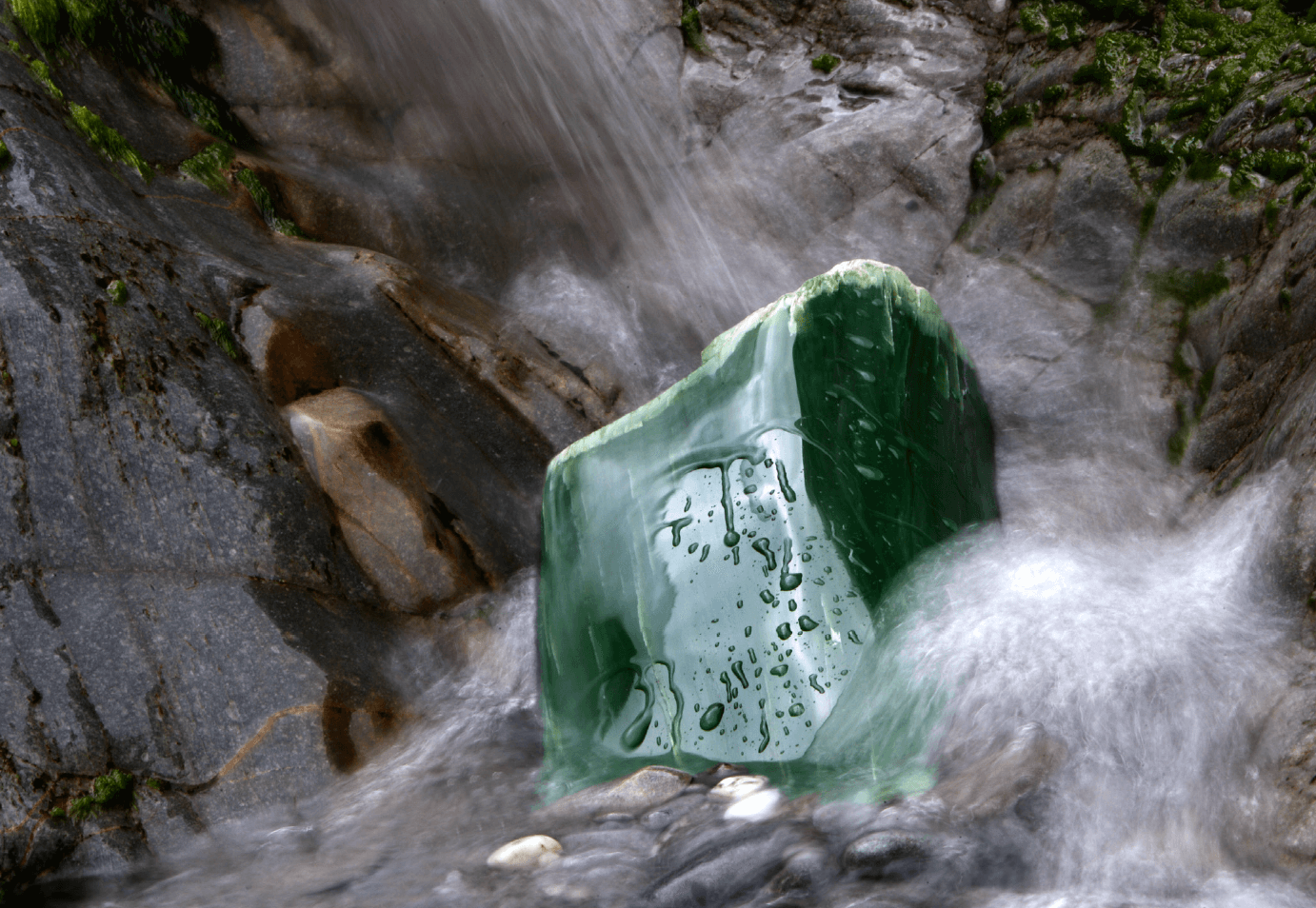
Greenstone is a metamorphic rock formed through tremendous heat and pressure. It is found throughout Westland’s alluvial glacial moraines. The main historical gathering places are between Greymouth and Hokitika. Just where certain varieties and types of stone originated from, remain a mystery, locked away in a distant past, when all was upthrust and under ice.
Bands of Pounamu formations, which tend to run in a North Easterly direction, consist mainly of Serpentine, Dunite and similar Olivine rock, Serpentine talc formations and actinolite. The addition of other combinations, with a mixture of minerals, accounts for why these formations are often referred to as a mineral belt.
A GUIDE TO GREENSTONE
THE LINK WITH GOLD
Greenstone was often cast aside for the golden treasure apparently not wanted, and the land lay forsaken and forlorn for many years. Rusting hulks of iron served as a reminder of the vanished gold. Most prospectors agree that more Greenstone is found where better than average gold deposits occur. When we look at different areas, we find that certain places produce very different varieties of stone.
The first record of Greenstone found in New Zealand was in 1864, when two Maori, Simon and Samuel discovered a large Greenstone boulder in the Hohonu River, this whole area was once named Pounamu. These two prospectors can also lay claim to starting off a gold rush to this area, for when they moved the stone and watched as the water cleared, coarse gold appeared.
The areas around Marsden have produced what is generally recognised as the best Greenstone that has been found in New Zealand. It is also a place where rich gold deposits were mined during the mid-1860s.
The stone from this area is more like the Kahurangi variety. The now famous ‘flower jades’ mainly come from this district, usually completely encased in a weathered white or brownish talc-like rind.
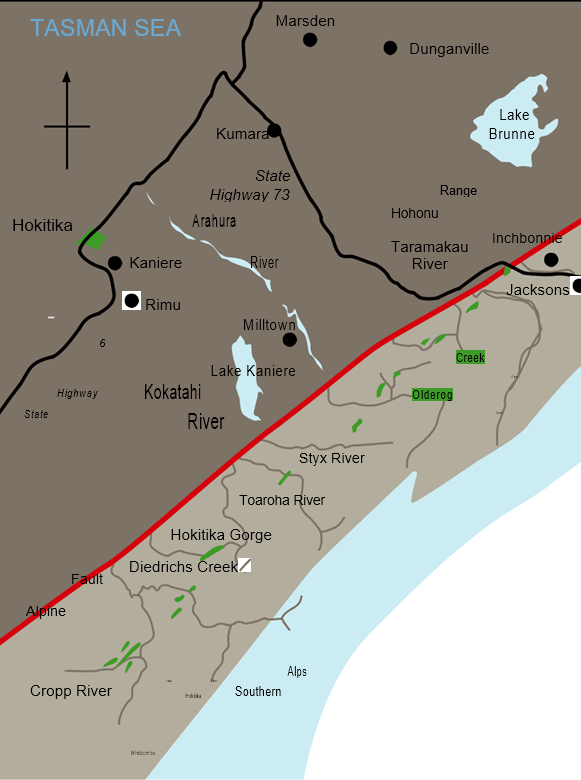
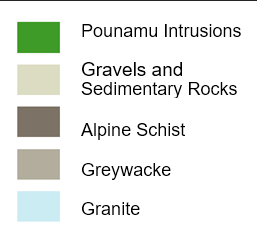
A story of Discovery
PAT THOMPSON – POSSIBLY THE FINEST WATER WORN STONE IN THE WORLD
Pat Thompson was another prospector from Kumara who worked on the Kanieri Gold dredge. He arrived outside my factory one day, having worked the night shift, with a stone in the boot of his car. We both went out to look, he raised the boot lid, and as soon as I saw the stone I knew it was something special.
Pat’s find was completely worn smooth, what’s known within the trade as “water washed”. I knew from the time I first saw this stone that it would never be cut like so many of the beautiful water worn stones were in those early years. Stones like this are rare specimens indeed.
Pat then proceeded to tell me how he had found it. He was on the “back shift” as they called it, working all night under lights with screaming noises from steel on steel, such a hell of a din. These dredges could be heard for miles and they never stopped. It was overcast and drizzly, the clouds opening up to reveal the moon occasionally. It was at one of these moments that Pat caught a glimpse of the stone, wet and gleaming green, riding on the top of a bucket full of wash, in the stacker on the way to the tailings dump.
He rushed to shut down the bucket line, threw the switch, raced back to grab the stone and dumped it on the deck. He then hurried back to switch on the stacker again. The whole activity was completed within a minute! This wasn’t the first time Pat had done this. It was a dicey act, for if the bucket line was stopped for long, sediments and gravels could cause the buckets to become almost cemented to the face.
This made it very difficult to restart and was not permitted unless great logs were likely to be caught or jammed. It was, however, an instant decision from a dedicated Greenstone man, thinking only of the stone and of nothing else. That’s how these treasures are retrieved, with luck, desperation and a burning desire to secure a gem.
The dredge was digging at a depth of 18 metres, but it is difficult to know the exact level at which the stone was dislodged. It had moon shaped scales on its surface, a sure sign of a perfect stone. It also had a streak of the Totoweka, (the red colour rarely found in Greenstone). I have shown this stone to the late Dr Rodger Duff, and in his opinion, it was the finest Greenstone he had seen.
The bucket line often got jammed when old logs got caught up in the works. On another night the line became completely jammed with logs and huge boulders. The logs and stones were rolled off onto the deck and left there. The night shift had, had a time of it. Exhausted, they left the debris of logs and stones for the day shift to clear. Normally everything would be cast off over the side into the pond, anything to get the dredge working again.
Next morning, the hoses were played onto the deck as the washing down commenced. The hose was directed to a huge stone and a shout went up that it was a Greenstone. The Manager was informed but by the next day, the stone had disappeared. The word was that it had been sold to Jim Staples, who had friends in the right places.
